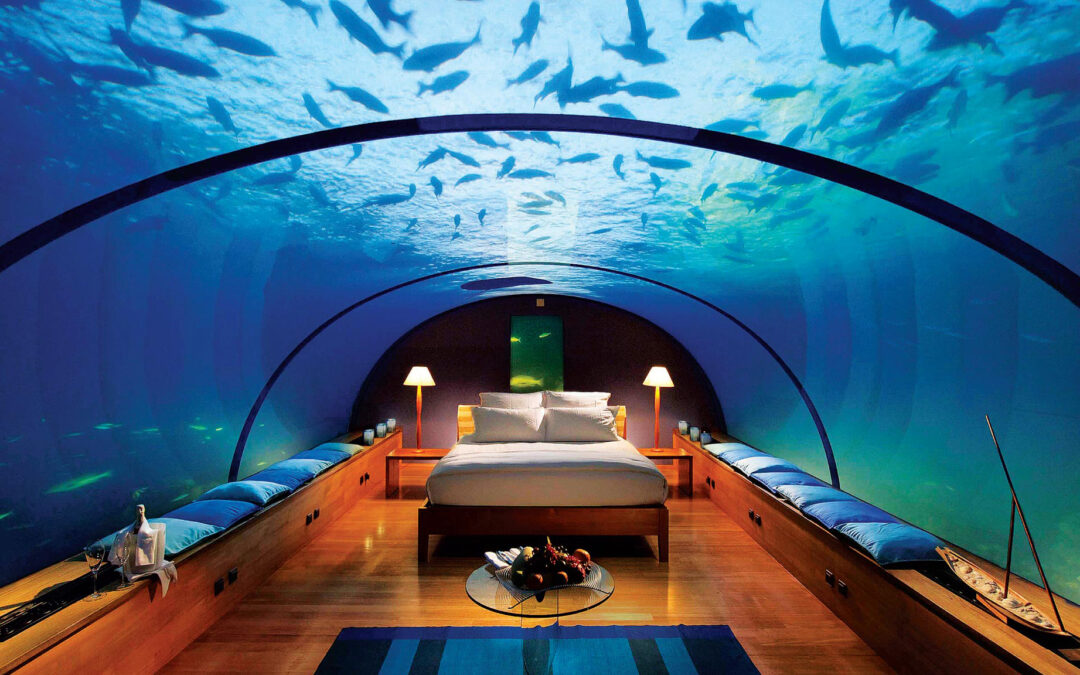Turning the sea into one’s home takes more than a superyacht. While the self-contained vessels are widely considered as the most luxurious vacation and exploration units, and superyacht owners love the water, some visionaries have turned their attention into building homes on and under the water instead.
An underwater luxury
Contrary to popular belief, underwater dwellings have indeed existed for quite a few decades. Jacques Cousteau, the famous French explorer, was one of the first to introduce the idea via the Conshelf (Continental Shelf Station) series of projects. These projects constituted the first underwater habitats and they proved to be successful in their limited capacity as inhabited research stations.
The research was, after all, the focus of the majority of these early underwater habitats. While the technology back then was somewhat limited, these and similar projects pioneered the area of underwater living and paved the way for the future and the concepts we have now.
Today, of course, the focus is placed on luxury. On one hand, major corporations are looking to create underwater hotels to host those who can afford the pleasure. On the other hand, there has also been a rise in interest in permanent underwater homes.
Areas like Dubai offer prime opportunities for such developments. The area of underwater homes is still in its very early stages. These early investors are often required to sink quite a lot of money into such projects. However, what they get in return is cutting-edge technology and the opportunity to participate in projects that might shape the future of underwater homes, including the creation of artificial reefs underwater in conjunction with the artificial islands topside.
Technology advancements and hurdles
One of the most important things to consider in underwater homes is ensuring that the living conditions are safe and sound. For instance, underwater homes will need to have a specified projected lifespan. Regular inspections will have to be conducted to ensure that quality standards are up to par.
More than that, air pressure and makeup are two other elements which have to be considered carefully. For example, an ideal depth for an underwater home would be anywhere between 10 and 18 feet to make life support systems easily accessible. Furthermore, it will be easy to
ensure that the air pressure in the home will be the same as above the surface, eliminating the need for decompression and removing the dangers of the bends.
Thankfully, the technology to accomplish such goals does exist. As these homes are designed for a very specific subset of people, superyacht owners could very well choose locations in privately-owned islands or in nearby reefs. Mooring a superyacht in an inconspicuous location and then entering a luxurious underwater home may soon be feasible for many owners.

From concept to creation
Those who wish to experience what it would be like to live in an underwater home have a couple of options around the world. As one can imagine, however, these options are rather limited.
In the US, the only underwater hotel currently in operation is Jules’ Undersea Lodge. First established as a research laboratory, the 2-bedroom lodge is only accessible via scuba diving as the entrance lies about 7 meters under the sea.
Another example is the Utter Inn in Sweden. Above ground, it looks like a standard Swedish house but that is simply the entrance to a 1-bedroom accommodation underwater. Other accommodation projects, like the Poseidon Undersea Resorts, have generated a lot of hype in the past but have never made it past the concept stage.

Pipe dream or hopeful reality?
For superyacht owners who are very much interested in living under the sea, the concept of underwater homes is more a hopeful reality than a pipe dream. The technology already exists and it has been demonstrated in a variety of examples. Right now, the safest bets come from two companies: US Submarine Structures and Kleindienst with H2Ome and Floating Seahorse, respectively.
H2Ome is a proposed 1,200 sq. ft. underwater home that comes with all the luxuries one could expect. The $10 million houses can be transported to any location, they maintain the same air pressure as above surface, and come equipped with a variety of unique systems including a fish feeding contraption and external lighting to attract underwater dwellers for unique spectacles.
The Floating Seahorses are based in Dubai and come in a variety of different editions. The difference is that Kleindienst wants to create a community of underwater homes, complete with coral gardens and floating jetties that will connect them to each other and to the floating islands of the Heart of Europe where these projects are located.
Superyacht owners with ambitious accommodation plans should definitely keep an ear out for underwater homes. Right now, all these projects need are investments. After that, the concept of underwater living will surely become a reality, at least for a small percentage of the elite.

